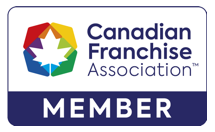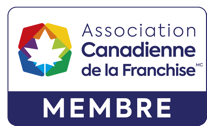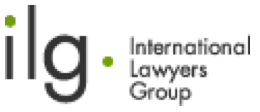Coronavirus disease 2019 (COVID-19) has officially been declared a pandemic by the World Health Organization (“WHO”). While Public Health Officials have confirmed the risk is still low, it is important for employers to be proactive in taking measures to address the pandemic in the workplace to ensure their employees are protected and supported.
It is recommended that employers ensure they are actively communicating with their employees as to measures being taken and policies and practices in place to address concerns in the workplace.
FIRST: Know your legal obligations
In creating and implementing a COVID-19 protection plan for your employees and your workplace it is important to be aware of some of your legal obligations as an employer:
- Pursuant to the Ontario Health and Safety Act (“OHSA”) employers have an obligation to take every precaution reasonable in the circumstances to protect their employees. Most employees who reasonably believe a condition in the workplace is likely to endanger their health or safety can refuse to work under the OHSA. Employees should not be penalized for this in the face of the pandemic. This should be assessed on a wide scale basis for your workplace and on a case by case basis. It is critical that your contingency plan accommodate and adapt to the fluidity of the pandemic.
- If you are a WSIB employer and an employee is infected with COVID-19 during the course of their employment, the employee may be entitled to compensation and services under the Workplace Safety and Insurance Act (“WSIA”). The employee would have to establish that the injury arose out of and in the course of their employment and impairment by an occupational disease that occurs due to the nature of their employment in which they were engaged. Each case related to COVID-19 would of course be assessed on a case by case basis.
- If your employees are governed pursuant to the Employment Standards Act (“ESA”) they are protected by a number of unpaid job protected leave provisions: Sick Leave, Family Responsibility Leave, Family Caregiver Leave, Emergency Leave, Family Medical Leave, and Critical Illness Leave. Employees should not be discouraged or penalized in any way for exercising their rights to a leave pursuant to the ESA. In addition, if your employees have paid sick leave in their contracts of employment, they should be encouraged to use it, where appropriate.
- If your employees are eligible and qualify for Employment Insurance (“EI”) sickness benefits they may apply for the same in the event they need them to deal with self-isolation and quarantine directions from a public-health officer as a result of COVID-19.
- The Ontario Human Rights Code (“OHRC”) prohibits discrimination and harassment on the grounds of disability and family status among other grounds. COVID-19 is likely to be treated as a disability and employees who have contracted COVID-19 or who are perceived at risk of contracting COVID-19 are not to be treated differently beyond what is required to maintain a safe workplace. In addition, employers have a duty to accommodate employees with a disability and those who are required to take care of their family members, to a point of undue hardship, in the face of COVID-19. Determining what constitutes undue hardship is complex and dependant on several factors. Employer should seek legal advice when addressing this issue.
- Employers should be aware of their obligations to report under the Health Protection and Promotion Act (“HPPA”) and the Personal Health Information Protection Act (“PHIPA”) that apply to designated individuals such as regulated health professionals, hospital administrators, laboratory operators, school principals, as well as superintendents of certain institutions. HPPA provides medical officer of health broad powers to restrict mobility and conduct of individuals, including directing quarantines, from which employers may take direction. In addition, Employers should also keep in mind their privacy obligations under PHIPA to protect individual personal health information.
SECOND: Establish a Contingency Plan to Protect your Employees
Promote Basic Preventative Measures (recommended by the WHO)
- Remind employees and clients to wash hands with an alcohol-based rub or soap and water frequently.
- Encourage employees and clients to maintain social distance (at least 1 metre [3 feet]) from anyone coughing or sneezing.
- Reinforce the message for employees to avoid touching eyes, nose and mouth.
- Advocate respiratory hygiene practices including covering your mouth with a bent elbow or tissue when you sneeze or cough and discard the tissue immediately at a nearby bin. Avoid using hands to cover your mouth when you sneeze or cough. If this occurs, remind employees to wash their hands immediately.
- If an employee has a fever, cough, or difficulty breathing, encourage them to seek medical advice early and over the phone or video conferencing rather than in person if possible and appropriate.
Communicate with your employees
- Appoint a point person or committee in your workplace to follow and communicate on COVID-19 updates and government directions.
- Establish a line of communication among leaders of the business and staff.
- Address business continuity and staffing plans in anticipation of increase absences.
- Provide regular updates on any changes to workplace practices and procedures, including reminders on prevention strategies.
- Remind employees of their sick leave entitlements to ensure they feel comfortable using them and seeking accommodation where necessary.
- Encourage employees to restrict or cease business travel oversees if possible.
- Establish a protocol for employees to advise where they are travelling to on vacation or for personal reasons to ensure their safety.
- In the event it is required ensure your employees are made aware of any directives to not report to the office well in advance to allow them to make plans to work remotely.
- Be sensitive and empathetic in all communications to employees on this matter.
Establish Alternative Working Arrangements
- Consider temporary amendments to business policies and procedures on leaves, flexible work arrangements and remote working.
- Remind employees of their sick leave entitlements pursuant to their employment contracts and job protected leaves pursuant to employment related legislation and ensure employees are aware that they will not be penalized.
- Establish an environment of protection and support for employees to ensure they feel comfortable to not report in to work if they feel ill or have any reason to suspect they may have been exposed to COVID-19.
- Ensure it is clear to all employees that if they have been diagnosed with COVID-19 or believe they have been exposed to someone with COVID-19 they should NOT report to the workplace.
- Quarantined employees should exercise the option to work remotely if that is possible or take a sick leave and apply for EI benefits if they are eligible. Alternatively, employers should be encouraged to review their paid sick leave policies in the face of COVID-19 with a view to encourage employees to stay home and minimize exposure to others.
Promote Health and Wellness
- Encourage employees to stay home if they feel ill or have reason to believe they have been exposed to COVID-19.
- Discourage unnecessary visits to doctors or medical facilities to obtain documentation from employees to substantiate their stay at home.
- Healthy office hygiene practices should be implemented, including extra sanitization, availability of resources to ensure spaces are kept clean with additional garbage bins to discard tissues, paper towels, and other cleaning supplies.
- Ensure that all personal health information obtained during this time is protected and not used in any way to penalize an employee. Caution should be taken with respect to human rights considerations and privacy obligations on the part of the employer.
- Check in with reporting employees to ensure they are feeling safe and nurtured.
THIRD: Seek legal advice with respect to any workplace matters.
It is our recommendation that you document all steps taken by you to ensure your employees and your business is protected during this time of uncertainty and evolving landscape. Employers should ensure contingency plan considerations are recorded, communications saved, amendments to policies and procedures noted with timeframes and individual consideration for accommodation should be noted and detailed.
Our team of lawyers here at Mills & Mills LLP are available and ready to assist you with any inquiries you may have and establishing a COVID-19 contingency plan for your workplace. Contact us online or at (416) 863-0125.

 2 St Clair Ave West
2 St Clair Ave West


